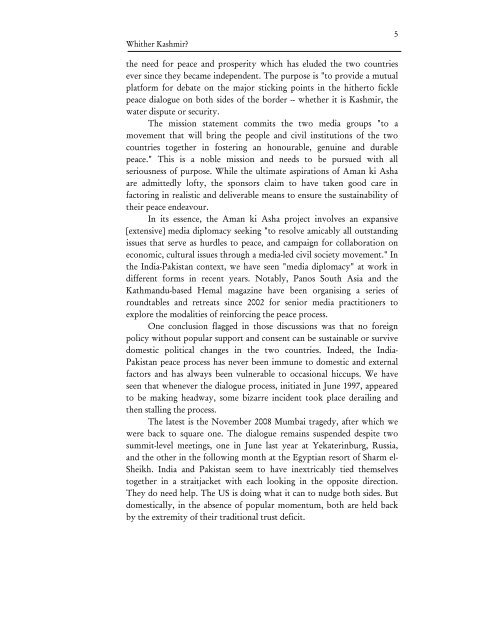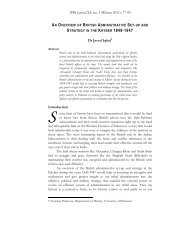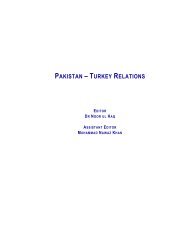120 Whither Kashmir? (Part II) - Islamabad Policy Research Institute
120 Whither Kashmir? (Part II) - Islamabad Policy Research Institute
120 Whither Kashmir? (Part II) - Islamabad Policy Research Institute
Create successful ePaper yourself
Turn your PDF publications into a flip-book with our unique Google optimized e-Paper software.
<strong>Whither</strong> <strong>Kashmir</strong>?<br />
the need for peace and prosperity which has eluded the two countries<br />
ever since they became independent. The purpose is "to provide a mutual<br />
platform for debate on the major sticking points in the hitherto fickle<br />
peace dialogue on both sides of the border -- whether it is <strong>Kashmir</strong>, the<br />
water dispute or security.<br />
The mission statement commits the two media groups "to a<br />
movement that will bring the people and civil institutions of the two<br />
countries together in fostering an honourable, genuine and durable<br />
peace." This is a noble mission and needs to be pursued with all<br />
seriousness of purpose. While the ultimate aspirations of Aman ki Asha<br />
are admittedly lofty, the sponsors claim to have taken good care in<br />
factoring in realistic and deliverable means to ensure the sustainability of<br />
their peace endeavour.<br />
In its essence, the Aman ki Asha project involves an expansive<br />
[extensive] media diplomacy seeking "to resolve amicably all outstanding<br />
issues that serve as hurdles to peace, and campaign for collaboration on<br />
economic, cultural issues through a media-led civil society movement." In<br />
the India-Pakistan context, we have seen "media diplomacy" at work in<br />
different forms in recent years. Notably, Panos South Asia and the<br />
Kathmandu-based Hemal magazine have been organising a series of<br />
roundtables and retreats since 2002 for senior media practitioners to<br />
explore the modalities of reinforcing the peace process.<br />
One conclusion flagged in those discussions was that no foreign<br />
policy without popular support and consent can be sustainable or survive<br />
domestic political changes in the two countries. Indeed, the India-<br />
Pakistan peace process has never been immune to domestic and external<br />
factors and has always been vulnerable to occasional hiccups. We have<br />
seen that whenever the dialogue process, initiated in June 1997, appeared<br />
to be making headway, some bizarre incident took place derailing and<br />
then stalling the process.<br />
The latest is the November 2008 Mumbai tragedy, after which we<br />
were back to square one. The dialogue remains suspended despite two<br />
summit-level meetings, one in June last year at Yekaterinburg, Russia,<br />
and the other in the following month at the Egyptian resort of Sharm el-<br />
Sheikh. India and Pakistan seem to have inextricably tied themselves<br />
together in a straitjacket with each looking in the opposite direction.<br />
They do need help. The US is doing what it can to nudge both sides. But<br />
domestically, in the absence of popular momentum, both are held back<br />
by the extremity of their traditional trust deficit.<br />
5




